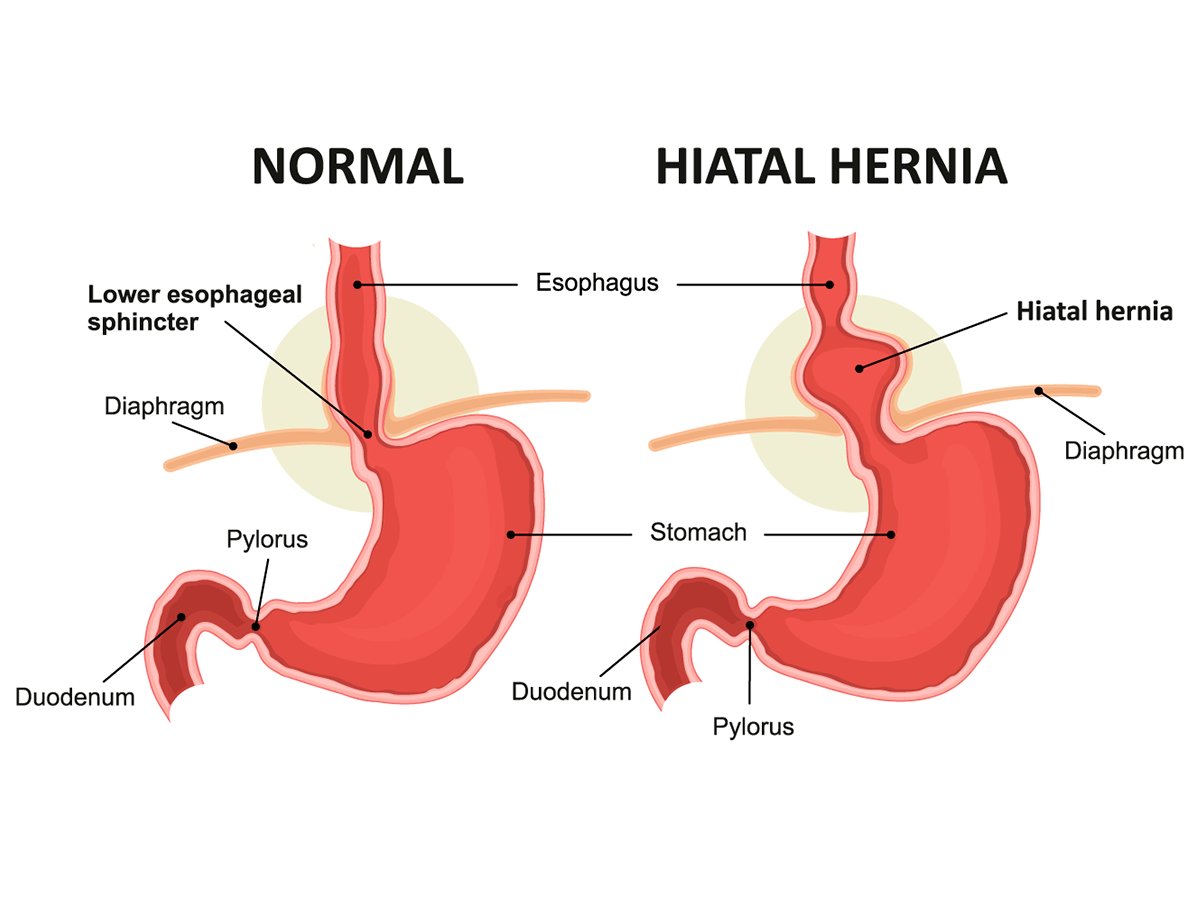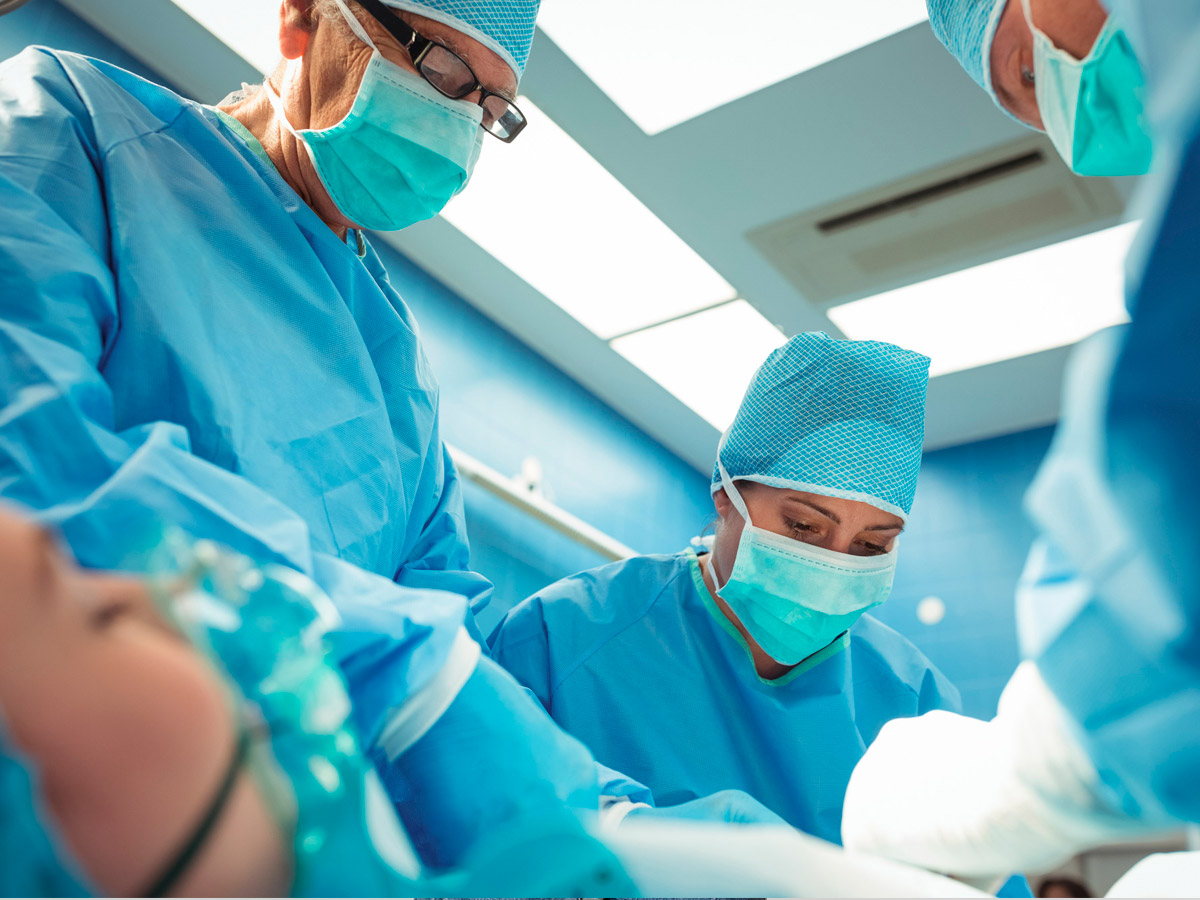- +52 664 761 5349
- contact@tijuanasurgery.com
- Paseo de los Héroes 9211 Edificio Xtal Zona Rio Tijuana BC México 22010

A hiatal hernia occurs when the upper part of the stomach slips into the chest cavity through a small opening (hiatus) in the muscle that separates the chest from the abdomen (diaphragmatic muscle).
It occurs when the diaphragmatic muscle tissue weakens and the opening (hiatus) through which the esophagus joins the stomach enlarges, allowing the stomach to move into the chest cavity.
We do not always know why this happens, although it may be for several reasons, such as:

In most cases, a small hiatal hernia does not produce symptoms. However, a large hiatal hernia causes food and acidic gastric juices from the stomach to back up into the esophagus, this is known as gastroesophageal reflux. This is irritated and is when we begin to suffer the symptoms, such as:

Heartburn

Flatulence

Abdominal pain or chest pain

Feeling of fullness after meals

Bad breath or dry cough

Problems passing food

Occasionally vomiting blood or black stool that may indicate gastrointestinal bleeding

In some of the cases, hiatal hernia can be solved, in initial stages, with changes in lifestyle habits, medication and diet, as mentioned above.
In case the hernia is too large or causes severe symptoms (severe esophageal inflammation, narrowing of the esophagus, ulcer, iron deficiency anemia, or complications) or in case of patients who do not respond to medical treatment, or need long-term medical treatment, the best option is to perform hiatal hernia surgery laparoscopically.
In laparoscopic surgery, the surgeon inserts a tiny camera and special surgical instruments into the abdomen through several incisions. He then performs the operation while viewing images of the inside of the body projected on a screen. In robotic surgery, the method is similar, but the surgeon performs the procedure from a computer console to control the mechanical arms and surgical instruments.
Minimally invasive surgery for hiatal hernia requires an overnight stay in the hospital, and patients often have to modify their diet during the recovery period.
In order to determine the best therapeutic approach for you, your health care team may recommend some tests before proceeding with surgery.
Dr. Javier Cisneros Lopez is a general surgeon specializing in anorectal pathology surgery in the city of Tijuana, Baja California Mexico with 26 years of experience and more than 7,000 procedures performed. If you have any symptoms or questions regarding your health, schedule an appointment here to receive medical attention appropriate to your condition.
A hiatal hernia is an anatomical defect in which the part where the esophagus joins the stomach is displaced into the thorax through the esophageal hiatus (the hole through which the esophagus enters the abdomen from the thorax).
Hiatal hernias are usually small in size and do not produce significant symptoms. The disease becomes complicated when gastroesophageal reflux (acid from the stomach that goes up into the esophagus) appears and other symptoms such as chronic cough, hoarseness and, sometimes, problems in the respiratory tract appear.
Failure to treat this condition can lead to damage to the esophagus, such as esophagitis (inflammation or irritation) and, in some cases, trigger what is called Barrett’s esophagus, which is a potentially cancerous lesion.
Most hiatal hernias do not cause symptoms and therefore treatment is usually not necessary. Those who have mild symptoms, such as heartburn, acid reflux or gastroesophageal reflux disorder (GERD) can treat their condition with medication or lifestyle changes. However, surgery may be recommended if:
There are three types of surgery for a hiatal hernia: laparoscopic hiatal hernia repair and fundoplication, open repairs and endoluminal fundoplication. All three procedures require general anesthesia.
Laparoscopic hiatal hernia repair and fundoplication
Laparoscopic hiatal hernia repair and fundoplication is the most common surgery to treat hiatal hernia. This procedure uses laparoscopic repair or keyhole surgery. This surgery is minimally invasive and only requires the surgeon to make a few small incisions in the abdomen. The general surgeon inserts a laparoscope, which is a thin tube with a light and camera, into the abdomen to repair the hernia. The surgeon may also tighten the opening of the stomach to prevent the hernia from coming back.
Laparoscopic repair has some advantages over other types of hiatal hernia surgery.
These include:
After laparoscopic surgery, most people do not experience much pain, but may feel discomfort in the abdomen, chest and have difficulty passing food. After a laparoscopy, a person may go home the same day if they have recovered from the anesthesia. Otherwise, they may spend one night in the hospital to complete a full recovery from the anesthesia. A person may feel well again, but may experience more fatigue than usual.
Nissen fundoplication is very effective in relieving GERD symptoms. A 2009 study estimates that this surgery achieves a 90 to 95 percent success rate.
Contact information
Copyrights ©2022 – Tijuana Surgery Center